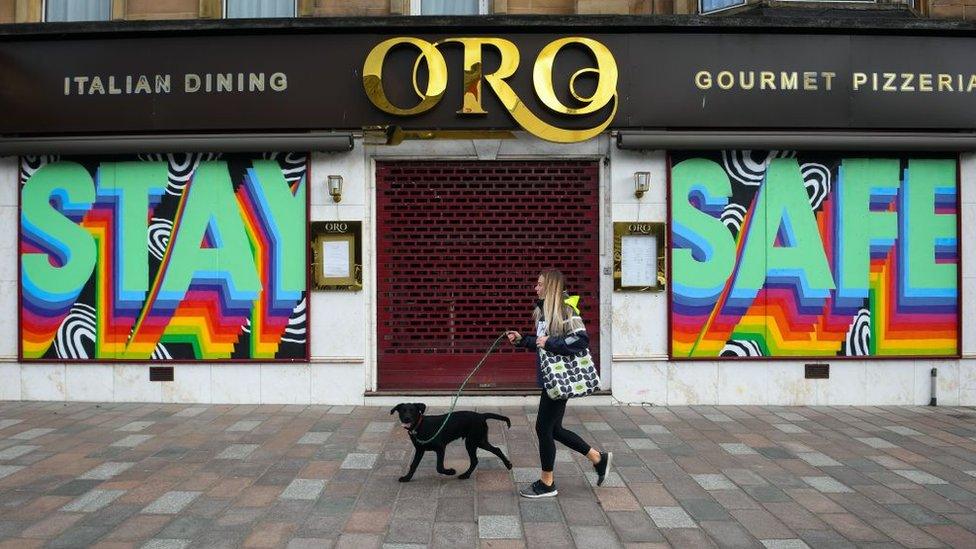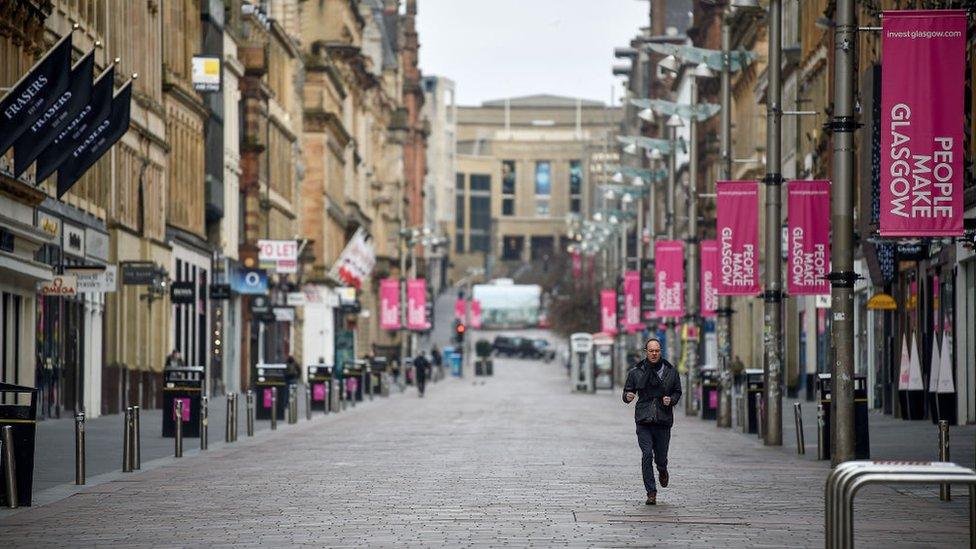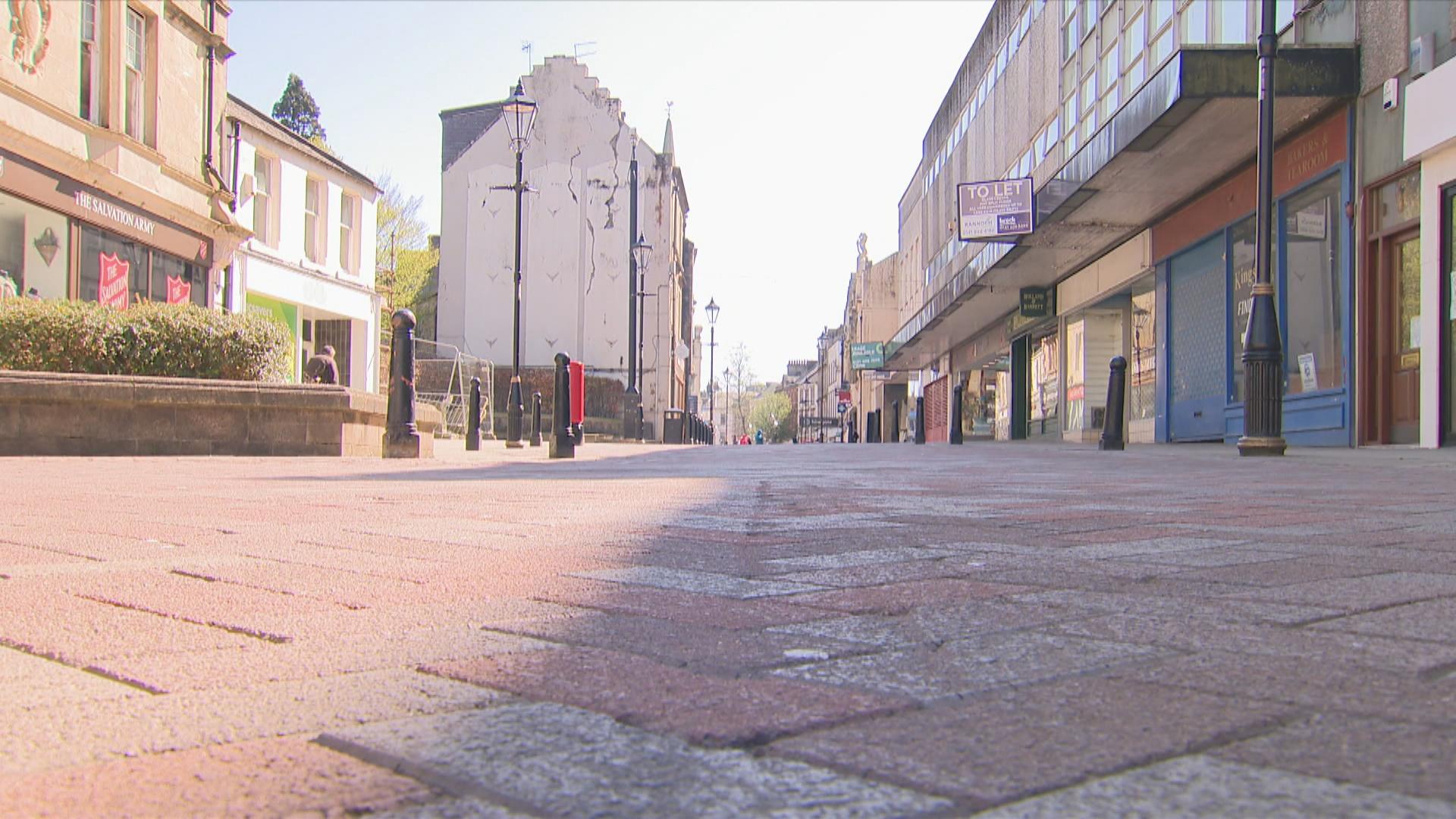Coronavirus: How the health crisis has become an economic one
- Published

The number claiming welfare benefits give us the best insights into the early stages of the economic crisis
They're seeing male unemployment in some areas of Scotland rise above 10%
Underlying the raw data is which groups get worst affected, and the evidence is growing that it's the young
The claimant count was big news in the 1980s, when it hit three million and was pinned by her critics on Margaret Thatcher's government as a defining badge of shame.
We've paid less attention to it since the 1990s, when the labour force survey, as an international standard, began to capture a wider definition of unemployment. It's not dependent on the changing criteria for securing unemployment benefit, such as household savings or time spent out of work.
And we've paid less attention still since the job numbers consistently confounded expectations of what a slow-growing, low-productivity economy looks like. The UK, with Scotland in the mid-range of nations and regions, has been at or near record employment rates and record low unemployment.
That's suddenly changed. And we are looking back to the claimant count to give us the best indication this month of what's happened since the health crisis became an economic one. The labour force survey covers January to March, and barely registers the shock to the system in the final two weeks of that quarter.
Up by 73,000 from March, the Scottish claimant figure reached 188,000 by 9 April.
Over the year, that was an 80,000 rise, up by 2.3 percentage points to 5.4% of "working age" adults - those up to 64, even though many people work beyond that age. (For comparison, the labour force survey measure of Scots seeking work was at 4.1% in January to March.)
Not yet seasonally-adjusted figures show the male rate was up from 3.9% to 6.8%, reaching 117,600. For women, it rose by 1.8% percentage points to 4%, reaching 70,600.
Capital growth
The council areas with the highest unemployment rates were North Ayrshire, with 7.9% of working age adults seeking welfare support through Universal Credit, and West Dunbartonshire with 7.8%. In both those parts of Clydeside, more than 10% of working age men were claimants.
Glasgow and East Ayrshire were on 7.1%, with the city more than doubling its claimants to 31,600.
Among the more affluent parts of Scotland, some saw sharp increases from lower bases. Aberdeen unemployment doubled in the year to 4.3%. Aberdeenshire's doubled, while remaining the lowest of the mainland council areas, at 3.2%.

Edinburgh's claimant count was up by 8,200 to 14,000, with a 3.9% rate. That reflects the capital's dependence on hospitality and tourism, with many of those jobs self-employed.
All three island areas saw their claimant count double, though Orkney and Shetland retained the lowest levels in Scotland.
Safety net
These remain raw data. The qualitative questions are around the types of work and the demographic groups being most affected. The Resolution Foundation has shown in recent work that it is the lower paid who are affected by unemployment or furlough, external, just as they are the ones most likely to be in work and vulnerable to infection.
The impact is also felt disproportionately by those working in the gig economy, with uneven hours and unreliable employment contracts.
Self-employment covers a wide range of occupation and income. It is getting income support from the UK government to the end of May, but no sign of anything to follow. Many don't qualify even for the three month support, and have to hope that funds to plug the gaps will help out.
On such counts, it is those aged up to 25 who are most affected. They're also over-represented in the hospitality and retail sectors, which are among the hardest hit by lockdown.
And of course, measuring unemployment by the claimant count can ignore a very significant question mark over Britain's welfare system before Covid-19 appeared - was Universal Credit an adequate safety net through the good times, let alone the crisis now?

RISK AT WORK: How exposed is your job?
SCHOOLS: When will children be returning?
THE R NUMBER: What it means and why it matters
A SIMPLE GUIDE: What are the symptoms?

- Published19 May 2020

